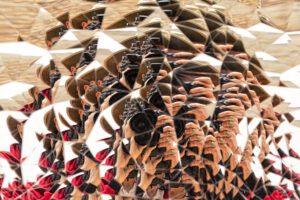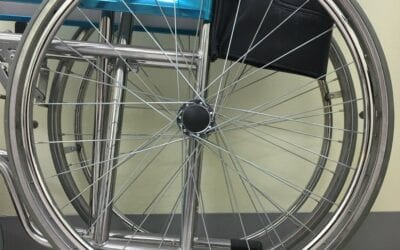Travelers are facing death by selfie for social media. It’s time that selfie makers use commonsense and self-respect to stay alive while making their photos.
 According to news reports, the teen TikTok star was there with a friend, taking a selfie at the top of the falls when they both slipped and fell. Her friend escaped with minor injuries, but Moe Sa Nay was swept away by the current and became trapped between large boulders. Rescue efforts were unsuccessful. Her body was recovered the next day. It was death by selfie. In fact, taking a selfie for social media has cost many lives — too many lives.
According to news reports, the teen TikTok star was there with a friend, taking a selfie at the top of the falls when they both slipped and fell. Her friend escaped with minor injuries, but Moe Sa Nay was swept away by the current and became trapped between large boulders. Rescue efforts were unsuccessful. Her body was recovered the next day. It was death by selfie. In fact, taking a selfie for social media has cost many lives — too many lives.
 Australian researchers have declared death by selfie a public health issue.
Australian researchers have declared death by selfie a public health issue.
A study by Australian researchers, published in the Journal of Medical Internet Research, concludes selfie-deaths are a public health issue. The researchers believe that the problem “requires a public health risk communication response.”
The researchers recommend the adoption of “no selfie zones,” physical barriers, signage, and providing information on dangerous locations to social media users.
They also believe that, “Media reporting of selfie incidents should focus on preventive messaging rather than blame or warning.”
Dr. Nathalie Auger agrees that selfie-related mortality is a public health concern, particularly for younger people.
Nathalie Auger, MD, MSc, a physician epidemiologist at the University of Montreal Hospital Research Centre in Canada who has conducted separate research into “Selfie Related Mortality,” stated just last year to MedPage Today,
“Selfie-related mortality is a public health concern, as these deaths that affect people of all ages around the world have been increasing and could be prevented through better public education and awareness.”
She said that her research showed that younger people were particularly at risk and that “overconfidence, peer pressure, attention seeking, and competition are thought to drive the desire to post hazardous selfies.”
Dr. Elias Aboujaoude says that travelers are “forced to go to extremes” when taking selfies to post on social media.
Elias Aboujaoude, MD, clinical professor of psychiatry and behavioral sciences at Stanford Medicine in California, speaking to MedPage Today, said that in the current age of social media in the lives of many across the globe that “likes, comments, and engagement are tied to users’ self-worth.” He continued, saying that to get life affirming validation, social media users are sometimes “forced to go to extremes.”
While it didn’t result in her death, last month a tourist was badly bitten by a horse being ridden by a member of the King’s Guard outside of the Household Cavalry Museum in London, England. She was attempting to take a selfie with the guard and his horse. Ironically, the incident took place directly in front of a sign that reads in part, “BEWARE. Horses may kick or bite.”
Typically guards yell at tourists to get back if they get too close to the horses. Apparently, tourists don’t heed the warning.
In June, Amber Potter, 23, was driving on the A11 in Norfolk, England, as was David Sinar, 64. She was driving a car. He was on his motorcycle. During her drive, Potter was using her cellphone extensively, according to court testimony. She was sending text messages, making audio clips and posting on Facebook Messenger. Then she picked up the phone and snapped a selfie while driving, causing her car to fatally run down David Sinar, who is survived by his mother, wife and a teenage son. Potter will have plenty of time to think about her last selfie while she’s in prison for the next three and a half years.
In Georgia, a nation in Europe, a 39-year-old beautician and popular Instagrammer was at a popular cliff lookout above the beach at Gagry on the northeast coast of the Black Sea, last April. According to news reports, Inessa Polenko climbed over a safety barrier at the cliff’s top, but lost her footing and fell about 120 feet over the edge to the beach below. She died soon after being admitted to the hospital.
In February, Jonathan Fielding fell 300 feet to his death near Capitol Reef National Park, merely to get a “better shot.”
In February, Jonathan Fielding, 19 years old, was at the Moon Overlook near Torrey, Utah, close to Capitol Reef National Park. According to his obituary, Fielding was there with friends on a photoshoot. To get a better shot, he got extremely close to the overlook’s edge and fell 300 feet to his death.
As of June 10, the “Death by Selfie Database” shows that since March, 2014, through this past June, there were more than 400 selfie deaths and 82 injuries across 49 countries. In the U.S. alone the database records 29 deaths due to selfie and five others injured. A full 44 percent of the deaths were from falling and 21 percent from drowning.
Jonathan Fielding’s sister, Rebecca, said she honors her brother by repeating the perfect shot or the perfect view isn’t worth anyone’s life. In a TV interview, Ms. Fielding said, “I don’t think a lot of people realize just how dangerous those areas are, it is just so easy to just slip and fall”
She’s right, of course. Yet there’s nothing wrong with taking travel selfies. I’ve taken countless self-portraits that are inherently wrong while traveling, including the one above that I shot in Atlanta’s High Museum of Art.
It’s time for tourists and others to use their common sense when taking selfies.
It’s time for tourists and others to use their common sense and intelligence when taking selfies.
Here are my three selfie rules of conduct and self-preservation.
Respect is the most important concept for life-saving conduct and self-preservation.
1. Have respect for others: It’s bad enough to put oneself in danger by selfie. It’s unconscionable to endanger others.
2. Have respect for wildlife: Respect for wildlife is two-fold. First, be careful not to be hurt by wildlife. Second, be careful not to hurt wildlife or their habitat so everyone can continue to enjoy seeing and studying them.
3. Have respect for yourself: Self-respect is essential to living successfully in this world. Each person wishing to create a selfie must be focused on their surroundings to prevent tripping, slipping, and falling. It doesn’t matter if you’re near water or at a great height. Each person must have respect for any dangerous position that they’re in.
Prevention strategies could focus on limiting travel or access to dangerous locations

I encourage every traveler to respect themselves and those with whom they’re traveling. They should never attempt to capture their perfect shot of themselves and their destination.
(Image: Copyright © 2024, NSL Photography, Self Portrait of Ned S. Levi. The reflection in Untitled work (2010) of Anish Kapoor, British, born India, 1954, Stainless steel concave dish at High Museum of Art.)
READ ALSO:
Handicapped traveler airport support — make sure before you fly
10 cultural norms and legal rules too risky to ignore when traveling internationally
After many years working in corporate America as a chemical engineer, executive and eventually CFO of a multinational manufacturer, Ned founded a tech consulting company and later restarted NSL Photography, his photography business. Before entering the corporate world, Ned worked as a Public Health Engineer for the Philadelphia Department of Public Health. As a well known corporate, travel and wildlife photographer, Ned travels the world writing about travel and photography, as well as running photography workshops, seminars and photowalks. Visit Ned’s Photography Blog and Galleries.



